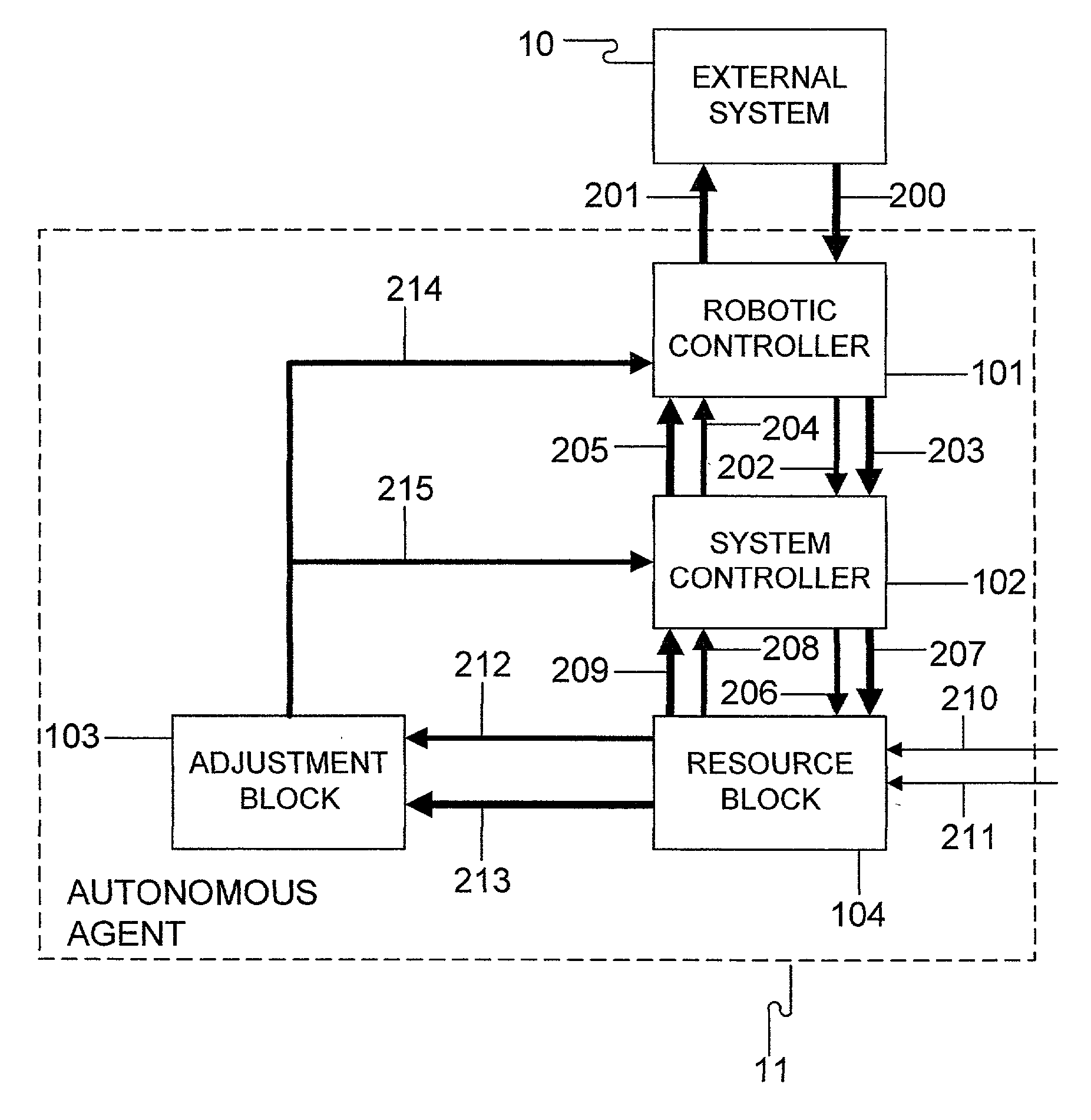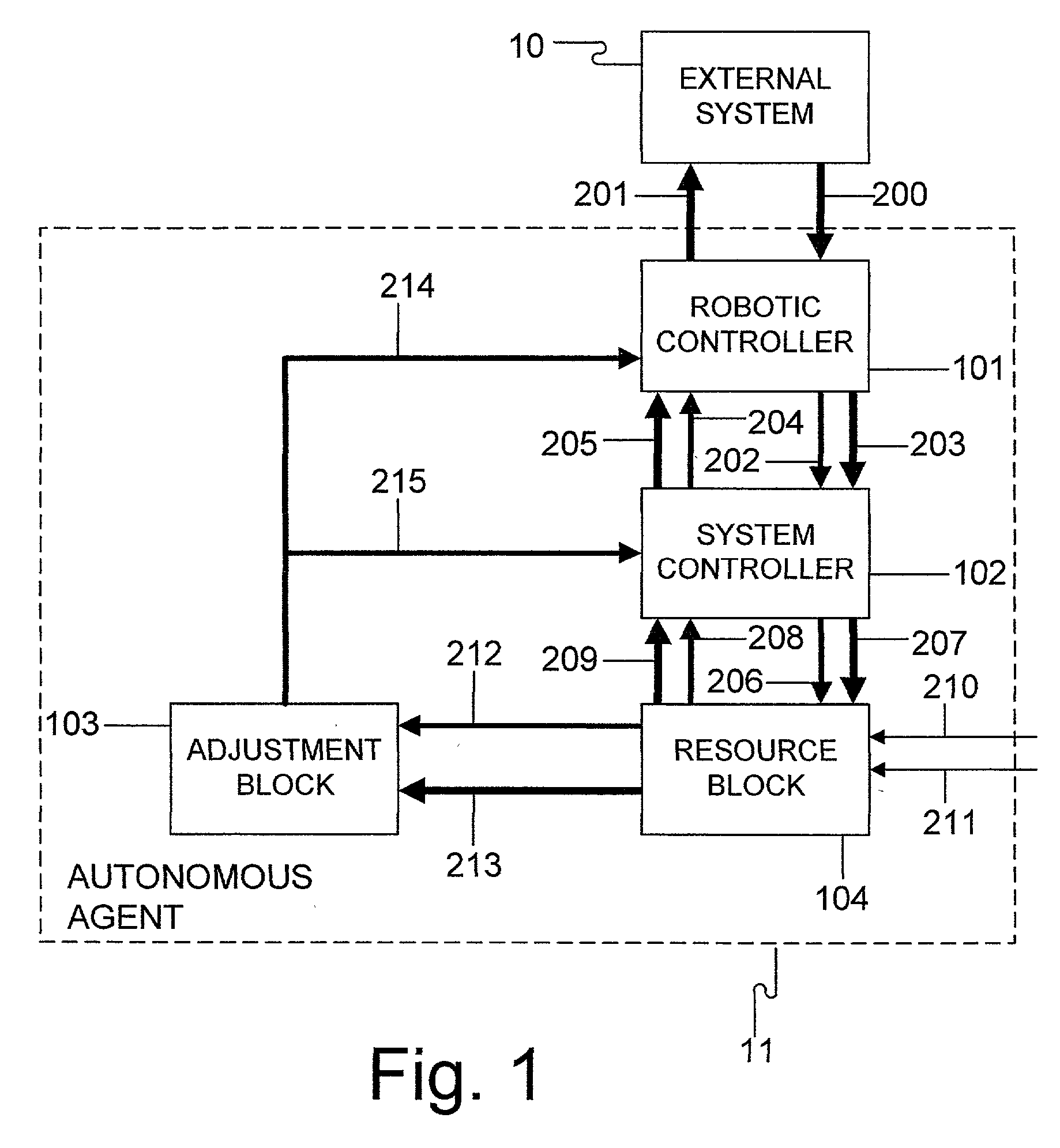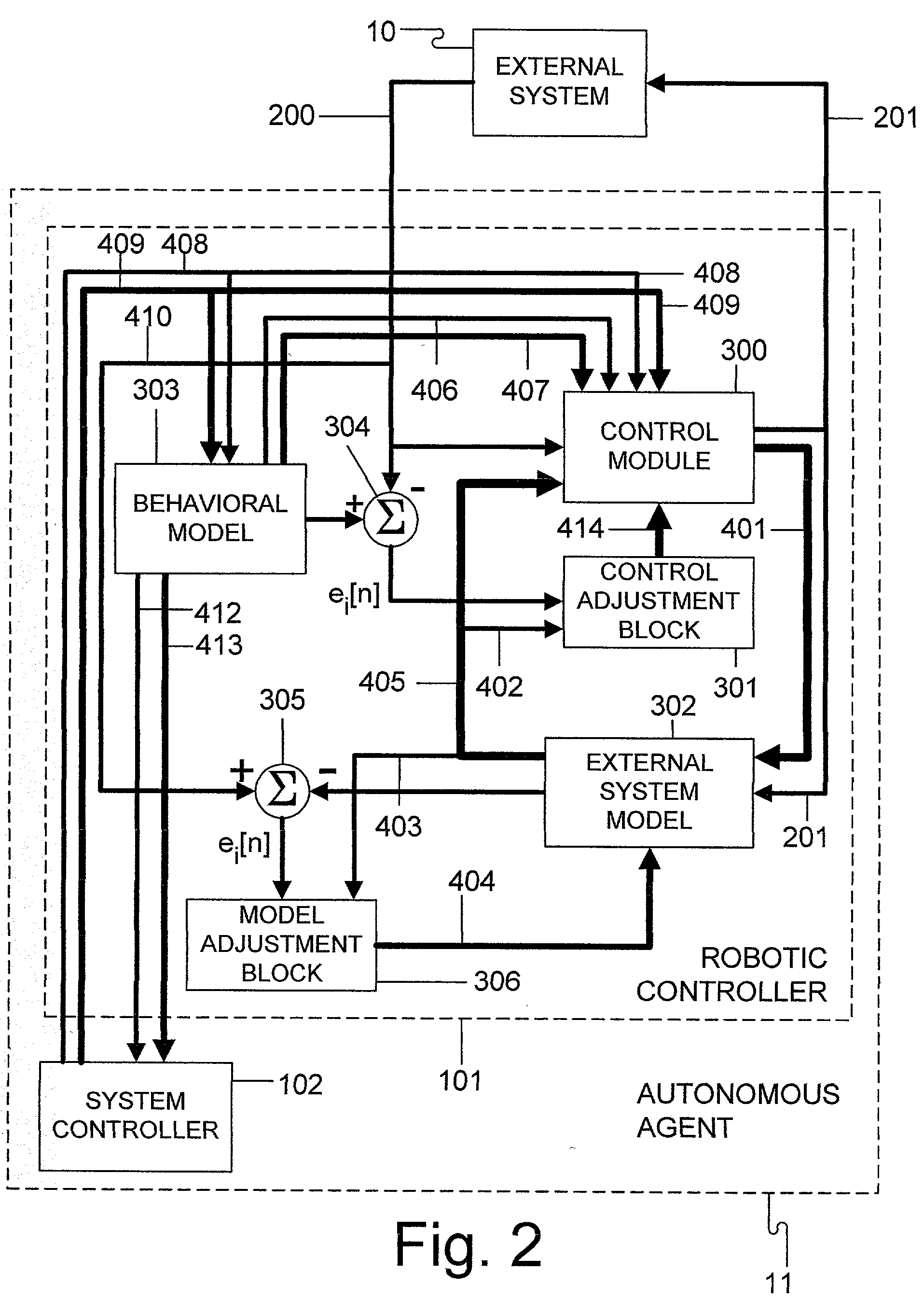Controlling the self learning behavior of an autonomous agent
a technology of autonomous agents and self-learning, applied in the field of machine learning, can solve the problems of not being able to make use of resource variables well, and no prior work of inventors
- Summary
- Abstract
- Description
- Claims
- Application Information
AI Technical Summary
Benefits of technology
Problems solved by technology
Method used
Image
Examples
Embodiment Construction
[0013] The purpose of this discussion is to explain how a computer system can be constructed that is self-motivated to learn and adapt to its environment. The motivation for the system to learn is typically a result of a desire to maintain internal variables within an acceptable range. This learning system can be distorted so the system can be trained to serve other objectives of the designer or the operator. By constructing into the system an analog input to inform the system how well it is doing, or the degree of operator satisfaction about the acceptability of its behavior, the system can be trained to behave appropriately. It can also be trained to accept sensory input and to use sensory input as a means of predicting the acceptability of its behavior. With appropriate memory, the system can remember predicted rewards for the appropriateness and acceptability of its behavior so that future rewards can be nothing more than a confirmation of prediction.
[0014] The system can also b...
PUM
 Login to View More
Login to View More Abstract
Description
Claims
Application Information
 Login to View More
Login to View More - R&D
- Intellectual Property
- Life Sciences
- Materials
- Tech Scout
- Unparalleled Data Quality
- Higher Quality Content
- 60% Fewer Hallucinations
Browse by: Latest US Patents, China's latest patents, Technical Efficacy Thesaurus, Application Domain, Technology Topic, Popular Technical Reports.
© 2025 PatSnap. All rights reserved.Legal|Privacy policy|Modern Slavery Act Transparency Statement|Sitemap|About US| Contact US: help@patsnap.com



